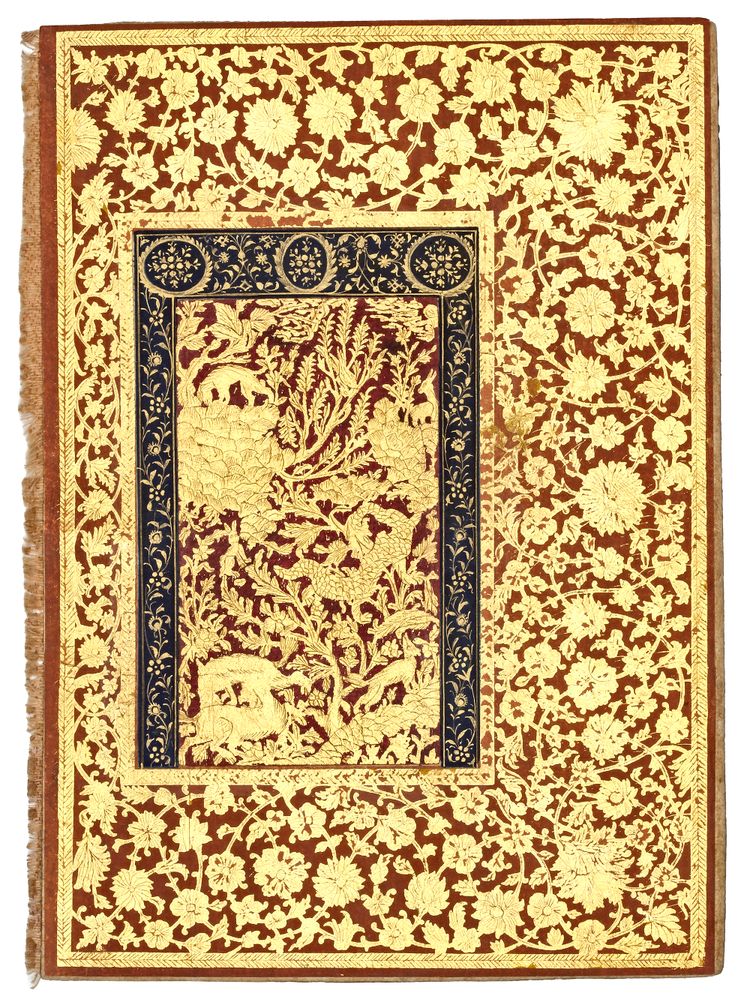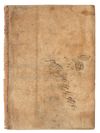A PAGE OF ILLUMINATION IN GOLD, INDIA, DECCAN, BIJAPUR OR GOLCONDA, CIRCA 1600
Lavishly adorned in gold against a black and red background, the central panel features wild animals and deer playfully frolicking through a forest scene. The surrounding black border is embellished with stylized gilt floral scrollwork, while the outer margin is richly decorated with an illuminated floral pattern set against a deep red ground.
Deccani paintings flourished under the enlightened patronage of the Adil Shahi rulers of Bijapur and the Qutb Shahi dynasty of Golconda, evolving into a distinctive artistic tradition that blended diverse cultural influences. This unique style emerged from a rich confluence of indigenous Rajput and Mughal aesthetics, merged seamlessly with Persian, Turkish, and even European artistic elements, reflecting the cosmopolitan environment of the Deccan courts during the 16th and 17th centuries. One of the most notable features of Deccani painting is its strong Persianate character, particularly evident in works produced in Bijapur and Golconda. This influence can be directly linked to the Deccan sultanates’ deep cultural, diplomatic, and intellectual ties with Safavid Iran. Artists and scholars traveled frequently between these regions, and Persian motifs, themes, and techniques became deeply embedded in Deccani visual culture. Deccani paintings are renowned for their vibrant color palettes, elaborate detailing, and an unmistakable love for luxurious ornamentation. Intricate patterns, shimmering textiles, and rich, jewel-toned hues imbue these works with a sense of opulence and mystique. Beyond their aesthetic beauty, these paintings often explore themes of poetry, spirituality, and courtly life, imbuing the scenes with a dreamlike, almost otherworldly quality.
For a more comprehensive understanding of this sophisticated art form, see Mark Zebrowski’s Deccani Painting (1983), which remains a seminal work in the field, and Stuart Cary Welch and Steven Kossak’s Indian Court Paintings: 16th–19th Century (1997), which provides broader context on Indian courtly traditions and their visual expressions. 22 by 16 cm.


